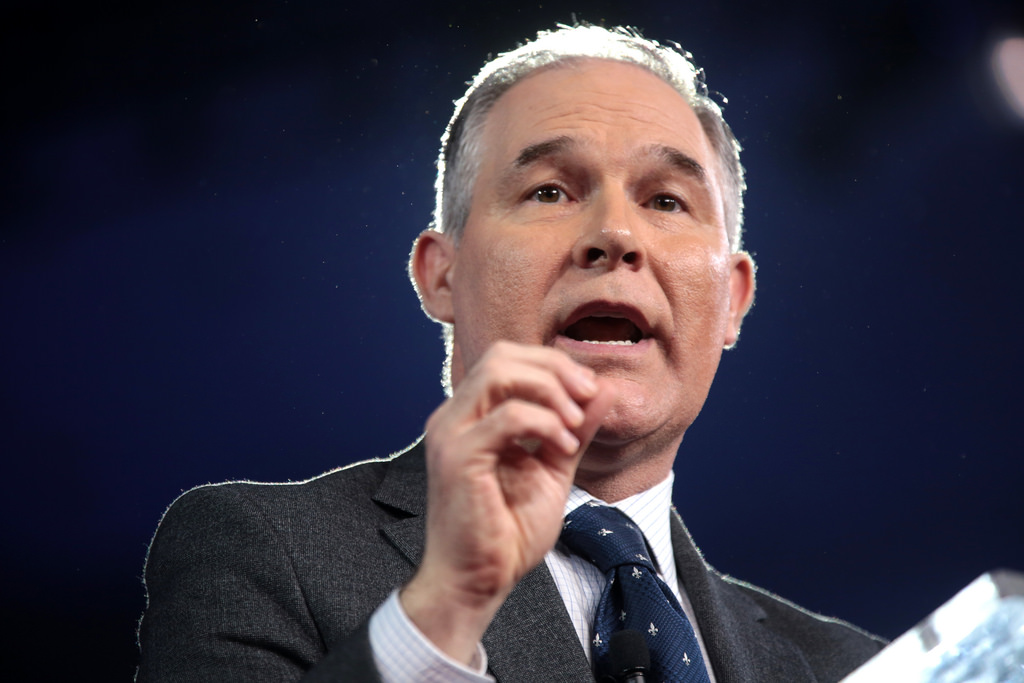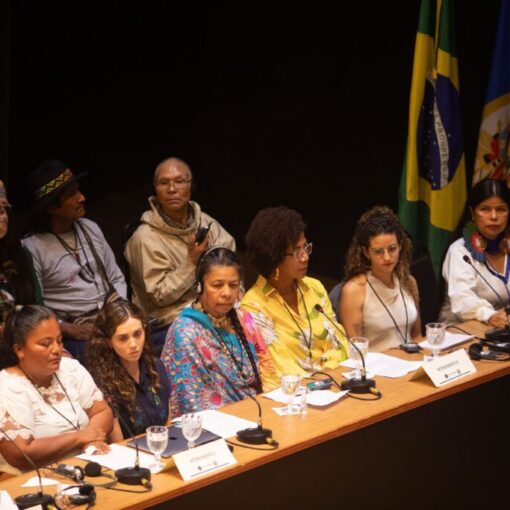Last year, for the first time, global temperatures exceeded 1.5oC above pre-industrial levels. This follows a decade of “record-breaking temperatures,” with the World Meteorological Organization concluding that “the past ten years 2025-2024 are the ten warmest years on record.” Reversing this trend requires urgent action to reduce greenhouse gas emissions but that won’t be sufficient by itself. It is also necessary to remove carbon dioxide from the atmosphere (a process known as carbon dioxide removal or “CDR”). One CDR approach currently generating significant interest involves the cultivation and sinking of seaweed. Alaska is thought to be an idea place for seaweed CDR projects, in part because local ocean conditions are well suited to growing seaweed, and also because the state has established processes for permitting seaweed farms. Those existing processes were, however, designed for projects involving the cultivation of seaweed for harvest (e.g., for human consumption). CDR projects, in which the seaweed is sunk, may raise a different set of legal issues. A new Sabin Center report explores the laws governing seaweed cultivation and sinking for CDR in Alaska.
Seaweed naturally converts dissolved carbon dioxide in ocean water into organic carbon through photosynthesis. The organic carbon is stored in the seaweed biomass which can then be sunk into the deep ocean to sequester the carbon it contains. This, in turn, enables the ocean to absorb more carbon dioxide from the atmosphere. There are a number of co-benefits to seaweed projects, in addition to their climate change mitigation potential. On local scales, seaweed farming could mitigate the increasing acidification of the ocean. Seaweed farming may also improve water quality by absorbing nutrient pollution in coastal waters. However, seaweed cultivation and sinking for CDR could also present risks, and there is a great degree of uncertainty as to the effects of large-scale seaweed farming and long-term incorporation of vast amounts of aquatic plant carbon in ocean sediments. A number of research projects are currently exploring the feasibility and impacts of sinking seaweed for CDR, and some in-ocean field trials are currently underway.
organic carbon is stored in the seaweed biomass which can then be sunk into the deep ocean to sequester the carbon it contains. This, in turn, enables the ocean to absorb more carbon dioxide from the atmosphere. There are a number of co-benefits to seaweed projects, in addition to their climate change mitigation potential. On local scales, seaweed farming could mitigate the increasing acidification of the ocean. Seaweed farming may also improve water quality by absorbing nutrient pollution in coastal waters. However, seaweed cultivation and sinking for CDR could also present risks, and there is a great degree of uncertainty as to the effects of large-scale seaweed farming and long-term incorporation of vast amounts of aquatic plant carbon in ocean sediments. A number of research projects are currently exploring the feasibility and impacts of sinking seaweed for CDR, and some in-ocean field trials are currently underway.
Alaska’s coastal waters, rich in nutrients, provide ideal conditions for seaweed cultivation projects. Moreover, Alaska’s coastal waters are more vulnerable to acidification than those in lower latitudes, making aquaculture particularly beneficial in this region. Alaska has made active efforts to streamline the permitting of seaweed cultivation, encouraging research projects in the area. Seaweed cultivation and sinking are regulated by a number of different laws at the state and federal levels. Our new report analyzes the potentially applicable laws and explains the permitting and other requirements they impose on seaweed projects in Alaska. The report also provides recommendations for improving the permitting process to facilitate CDR projects, while still ensuring they occur in a safe, responsible, and just way.
State Regulation
At the state level, there are three Alaska state agencies that jointly administer the statewide mariculture program: (1) the Alaskan Department of Natural Resources (“ADNR”), (2) the Alaskan Department of Fish and Game (“ADF&G”), and (3) the Alaskan Department of Environmental Conservation (“ADEC”). Permit applicants can submit a single application to the ADNR, who then processes it and passes it to the ADF&G and the ADEC for approval.
The ADNR has the power to lease land, including tidelands and submerged lands, for seaweed cultivation (known as aquatic farm site leases). The ADF&G regulates seaweed cultivation, providing aquatic farm operation permits.
The ADEC, as part of the joint permit, provides food establishment permits if any of the seaweed is harvested for consumption. Independent of the joint permit, the ADEC also regulates water quality in Alaska. Any federally permitted actions that result in discharges into waters must obtain a water quality certification (or waiver) from the ADEC under section 401 of the Clean Water Act (“CWA”).
In addition to approval from the three state agencies through the joint permit application, the project applicant will also require certain federal permits before being able to commence the project.
Federal Laws
There are three key federal statutes – the Marine Protection, Research, and Sanctuaries Act (“MPRSA”), the Clean Water Act, and the Rivers and Harbors Act (“RHA”) – which are likely to apply to seaweed CDR projects in addition to state law. These laws are administered by the Environmental Protection Agency (“EPA”) and the Army Corps of Engineers (“ACE”).
ACE is authorized to regulate seaweed cultivation and sinking under the CWA and the RHA. Under the RHA, a permit is required from ACE to install or remove any structures in or affecting navigable waters, including those constructed for seaweed cultivation. ACE also provides permits under section 404 of the CWA, which authorizes the discharge of “dredge” and “fill” material into navigable waters. Some seaweed projects may require dredging to build structures for farming, and may thus require a combined CWA and RHA permit.
EPA may regulate seaweed sinking under the MPRSA. The MPRSA prohibits the transportation of “material for the purpose of dumping it into ocean waters” without a permit from the EPA (subject to limited exceptions). Thus, for example, if seaweed is harvested and then sunk from a ship, an MPRSA permit would be required from EPA. Even where an MPRSA permit is not required to sink seaweed, other aspects of a sinking
Seaweed cultivation and sinking may implicate a number of other federal and state laws, which are highlighted in the recently published report. The report also provides recommendations as to providing for research permits, for further streamlining the permitting process and for additional incentives to support the growth and scalability of seaweed cultivation and sinking.

Ashwin Murthy
Ashwin Murthy is the Negative Emissions Fellow at the Sabin Center for Climate Change Law.




